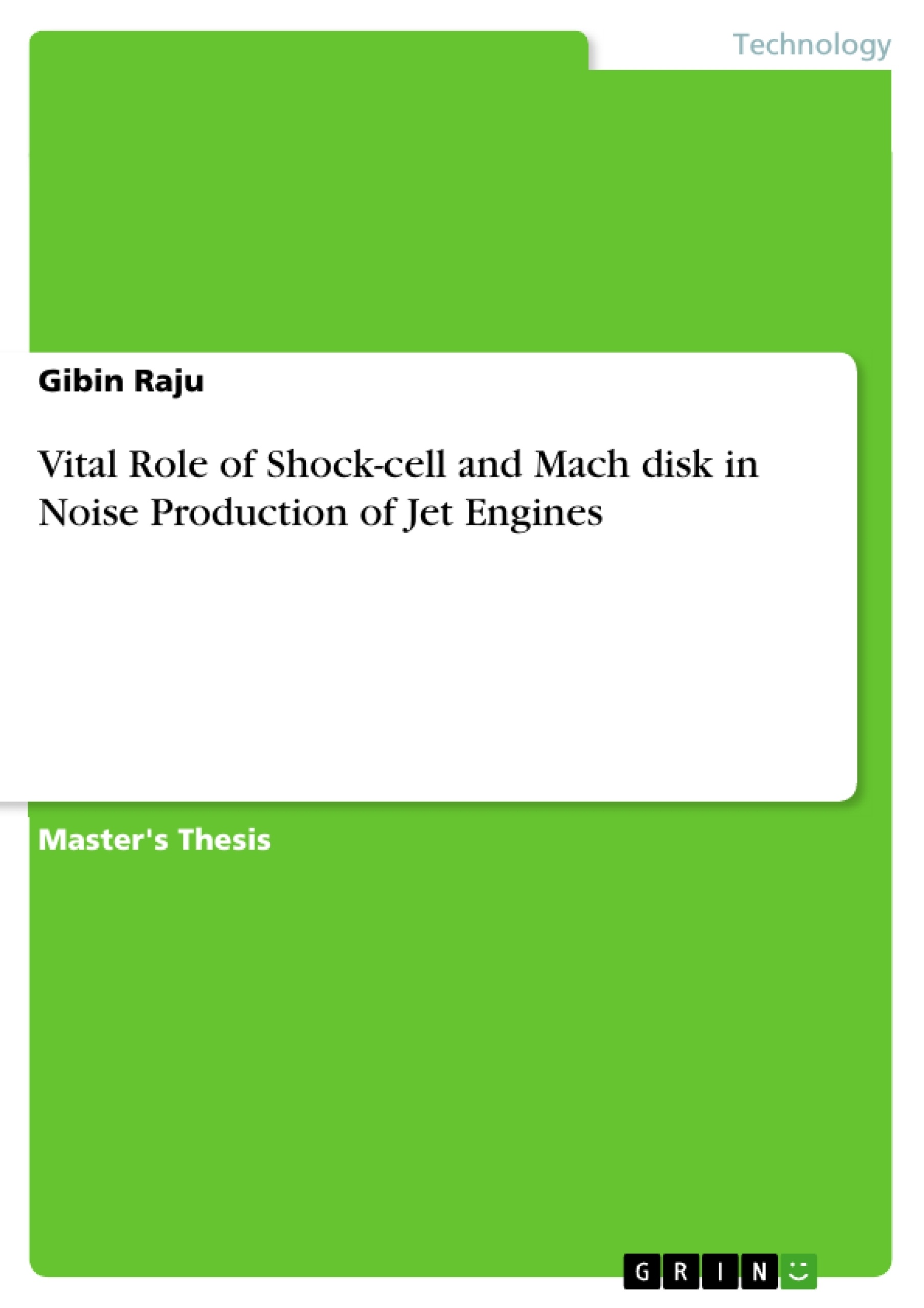The aim of this thesis is to discuss the vital role of shock-cell and Mach disk in noise production of jet engines. This study focuses on calculation of shock-cell spacing and Mach disk from various configuration of C-D Nozzles using Shadowgraph technique and detailing on how it varies with the test conditions. In the past three decades, the air traffic has nearly increased by about 40% and have always called for alternative propulsion techniques to replace or support the current traditional propulsion methodology in order to travel longer distances in shorter frame of time. In the light of current demand, the thesis draws motivation from increase in noise levels due to technological advancements of meeting higher specific thrust thus, achieving higher efficiency. The thesis emphasizes on the study of shock-cell noise by developing a complete view of the shock-cell structure and associated parameters with an imperfectly expanded supersonic jet on CD Nozzles over range of under-expanded, design and over-expanded operating conditions.
In the entire thesis study, the heated jets from the different C-D Nozzle are analyzed for proper visualization for the shock-cell structure. Shadowgraph is used in current study as it offers very high flexibility and acts as an excellent technique for visualizing the shock diamond exhaust structure and turbulent eddies. A systematic analysis has been performed to quantify the shadowgraph data through semantic video analysis and measured the shock-cell spacing over different temperature ratios (TR) and nozzle pressure ratios (NPR). Circular, rectangular and method of characteristics (MOC) convergent-divergent nozzles of 1.5 design Mach number with and without plates were tested to interpret the results. The data recorded during the experiment was processed to obtain an averaged image. Further, the averaged images were utilized to compute the shock-cell spacing of each nozzle. The computed shock-cell spacing is compared over the theoretical shock-cell length using empirical formula to validate the results. A good match has been established between theoretical and experimental results for the tested nozzles expect for over-expanded operating conditions.
Inhaltsverzeichnis (Table of Contents)
- Introduction
- Literature Review
- Jet Noise
- Shock-cell Noise
- Mach Disk Noise
- Experimental Setup
- Shadowgraph Technique
- Nozzle Design
- Instrumentation
- Data Analysis
- Image Processing
- Shock-cell Spacing Measurement
- Theoretical Shock-cell Length Calculation
- Results and Discussion
- Shock-cell Structure Visualization
- Effect of Temperature Ratio (TR)
- Effect of Nozzle Pressure Ratio (NPR)
- Effect of Nozzle Geometry
- Conclusion
Zielsetzung und Themenschwerpunkte (Objectives and Key Themes)
This thesis aims to investigate the role of shock-cell and Mach disk in generating noise from jet engines. The study focuses on calculating shock-cell spacing and Mach disk dimensions from various C-D nozzle configurations using the Shadowgraph technique, analyzing how these parameters vary with different test conditions.
- The influence of shock-cell and Mach disk on jet engine noise production.
- The use of the Shadowgraph technique to visualize and measure shock-cell structures.
- The impact of various nozzle configurations, temperature ratios, and nozzle pressure ratios on shock-cell spacing.
- The validation of experimental findings with theoretical calculations of shock-cell length.
- The significance of understanding shock-cell noise in addressing noise reduction strategies in jet engines.
Zusammenfassung der Kapitel (Chapter Summaries)
- Introduction: This chapter introduces the problem of jet engine noise, highlighting the importance of understanding shock-cell and Mach disk noise. It also outlines the objectives and scope of the thesis.
- Literature Review: This chapter provides a comprehensive review of existing research on jet noise, particularly focusing on shock-cell and Mach disk noise. It examines previous studies on shock-cell structure, noise generation mechanisms, and the effects of nozzle geometry and operating conditions.
- Experimental Setup: This chapter details the experimental setup used in the study. It describes the Shadowgraph technique, the design of the C-D nozzles, and the instrumentation employed for data acquisition.
- Data Analysis: This chapter explains the process of data analysis, including image processing techniques for quantifying shock-cell spacing from Shadowgraph images. It also describes the methods used to calculate theoretical shock-cell length based on empirical formulas.
- Results and Discussion: This chapter presents and discusses the experimental results obtained from the Shadowgraph studies. It analyzes the impact of temperature ratio, nozzle pressure ratio, and nozzle geometry on shock-cell structure and spacing. It also compares experimental findings with theoretical predictions.
Schlüsselwörter (Keywords)
Jet engine noise, shock-cell, Mach disk, Shadowgraph, C-D nozzle, temperature ratio, nozzle pressure ratio, shock-cell spacing, noise reduction.
- Arbeit zitieren
- Gibin Raju (Autor:in), 2018, Vital Role of Shock-cell and Mach disk in Noise Production of Jet Engines, München, GRIN Verlag, https://www.grin.com/document/434212




